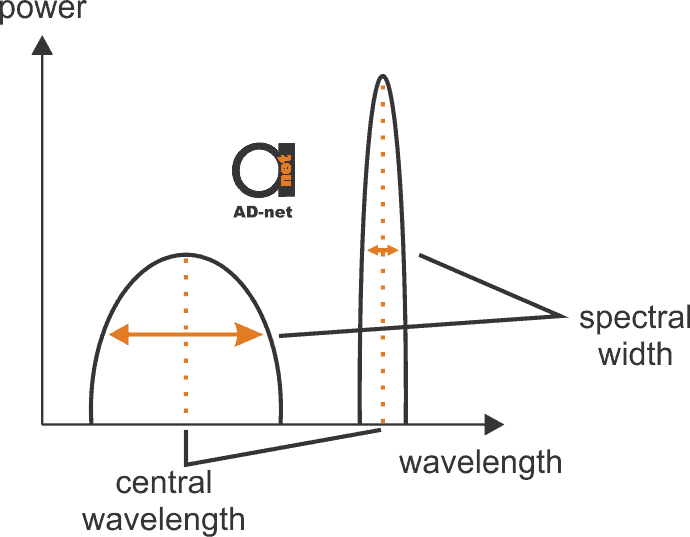Refraction
Refraction, or the bending of light is something we often see. When looking at a pen in a glass of water from the side, the pen appears to be bent. This refraction, or bending, occurs whenever light moves from a material with one Rl to a material with a different Rl. Understanding refraction is important when dealing with graded index multimode fibers.
Refraction obeys one simple rule: the bending will be towards the region with the lower speed. Stated differently, the bending will be towards the region with the higher Rl.

Figure 1: Refraction of light
Dispersion
Dispersion is also known as ‘pulse spreading’ or ‘pulse broadening.
Dispersion is caused by the delay of some of the optical power in a pulse at the output end of the fiber. Dispersion refers to the fact that the optical power that enters the fiber at the same time, exits the fiber at different times.
Dispersion causes an optical pulse width that increases continuously through the fiber.
- When dispersion exceeds the maximum amount allowed by the data rate, the output signal is different from the input signal.
This difference creates signal inaccuracy. Dispersion is one of the two mechanisms that limits transmission distances. Dispersion limits distance because it determines the accuracy with which a fiber can transmit data.
In data transmission systems, five types of dispersion can occur:
- Modal dispersion
- Chromatic dispersion
- Material dispersion
- Waveguide dispersion
- Polarization Mode Dispersion
Modal Dispersion
In a fiber, light can take two types of paths:
- All rays can travel along the same path and have the same path length
- Rays can travel along different paths and have different path lengths
Modal dispersion occurs when the rays travel along multiple paths and have multiple path lengths. Since the rays do not travel the same distance, different rays will arrive at the end of the fiber at different times. Modal dispersion can therefore be described as path length dispersion. Modal dispersion is the biggest cause of dispersion. This type of dispersion occurs in multi-mode fibers, but not in single mode fibers.

Figure 2: No Modal Dispersion

Figure 3: Modal Dispersion
Chromatic Dispersion
Chromatic dispersion is the second biggest cause of dispersion. Chromatic dispersion occurs because all commercial fiber optic light sources emit a range of wavelengths, known as the spectral width. Each of these wavelengths travels at a slightly different speed.

Figure 4: Schematic depiction of spectral width
Even if all the rays in a pulse travel the same path length, as happens in a single mode fiber, rays with different wavelengths arrive at the output of the fiber at different times. This form of dispersion occurs in both multi-mode and single mode fibers.


